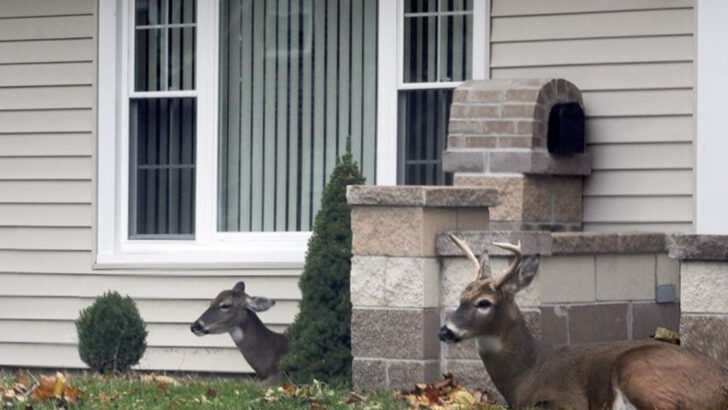The wild isn’t just out there anymore. It’s sneaking into our cities, parks, and yes—maybe even your backyard. These 12 wild animals have cracked the urban code. They’ve learned to live, hunt, and sometimes thrive right alongside humans. From clever raccoons tipping over trash cans to hawks soaring above skyscrapers, the city is their new jungle. And a few of these unexpected neighbors might already be sharing your block. Some are adorable. Some are a little scary. All of them prove that nature always finds a way—no matter where we build our concrete kingdoms.
Raccoons
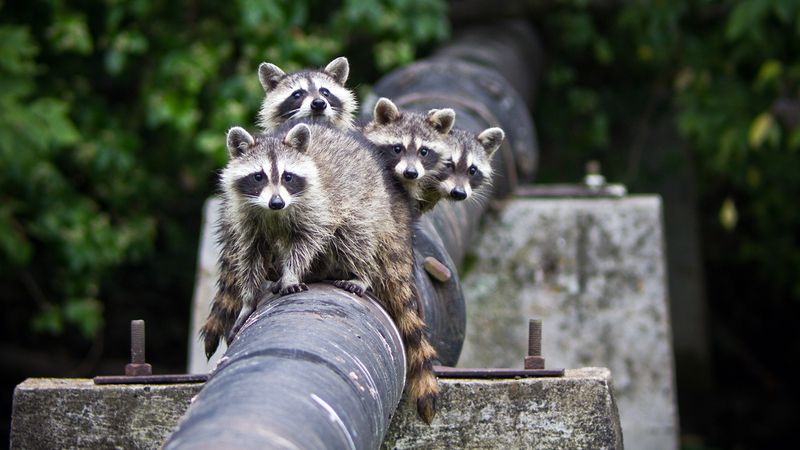
Raccoons are mischievous, masked bandits of the night. Known for their dexterous paws and smart problem-solving abilities, they thrive in urban settings. Their adaptability allows them to forage through trash cans, delighting in the buffet cities offer.
Their intelligence is matched by their curiosity, as they explore neighborhoods under the cover of darkness. Despite their reputation as pests, raccoons play a vital role in the urban ecosystem by controlling insect and rodent populations.
Did you know? Raccoons can open jars and doors, showcasing their remarkable dexterity and intelligence.
Coyotes

The adaptable coyote has found a niche in city life, often spotted trotting through parks or down quiet streets at dawn or dusk. This intelligent predator is skilled at surviving in diverse environments, including urban landscapes.
While they can pose challenges by preying on pets, coyotes are essential for controlling rodent populations. They are typically shy around humans and prefer to keep a safe distance, making sightings a rare and exciting event.
Fun fact: Coyotes communicate with a series of yips and howls, creating an eerie urban symphony.
Peregrine Falcons

Peregrine falcons, the world’s fastest birds, have taken to city skyscrapers as substitutes for their natural cliff habitats. From their high perches, they dive at breathtaking speeds to catch prey, mainly pigeons and other urban birds.
Their presence is a testament to wildlife resilience, adapting seamlessly to concrete jungles. Falcons help maintain avian populations in check, proving that birds of prey can thrive alongside humans.
Did you know? Peregrine falcons can reach speeds of up to 240 miles per hour during their hunting stoop, making them formidable urban hunters.
Red Foxes

The elusive red fox is a fascinating urban dweller, often spotted slipping through gardens and parks. With their striking red fur and bushy tails, foxes are adaptable hunters and scavengers.
In cities, they often feast on rodents and birds, and their presence is usually a quiet one. Foxes are known for their cunning nature, often avoiding human interaction while thriving in suburban settings.
Fun fact: Red foxes use a variety of vocalizations, from barks to sounds resembling human screams, to communicate with each other.
Opossums

Opossums, the only marsupials found in North America, are night wanderers in urban landscapes. Recognizable by their rat-like tails and white faces, these creatures are scavengers, cleaning up waste and keeping pest populations in check.
Opossums are immune to snake venom and consume ticks, reducing Lyme disease risks. Their nocturnal nature means they’re rarely seen during the day, often misconstrued as pests despite their beneficial roles.
Fun fact: When threatened, opossums “play dead,” a behavior known as thanatosis, to avoid predators.
Deer

Deer, with their graceful appearance, have become regular visitors in suburban backyards. These gentle herbivores are drawn to gardens and parks, where they find ample food.
While deer add a serene charm to the urban environment, they can also be a gardener’s nemesis, causing damage to plants and shrubs. Deer are most active at dawn and dusk, making them a common sight during these hours.
Did you know? White-tailed deer can leap over obstacles up to 8 feet high, showcasing their impressive agility.
Bald Eagles
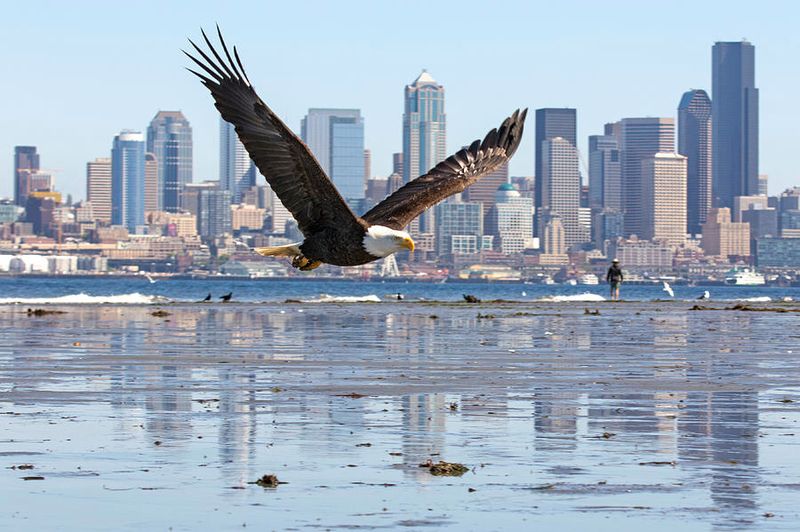
The majestic bald eagle, a symbol of freedom, has made a remarkable comeback in urban regions. Once endangered, these raptors now nest on tall structures, overlooking the bustling city life below.
Their presence signifies a successful conservation story, as eagles adapt to new environments. Bald eagles primarily feed on fish, but in cities, they may prey on smaller birds and mammals. Their striking appearance and impressive wingspan make them awe-inspiring sights against urban backdrops.
Fun fact: Bald eagles can see up to 1.5 miles away, spotting prey from astonishing distances.
Turkeys
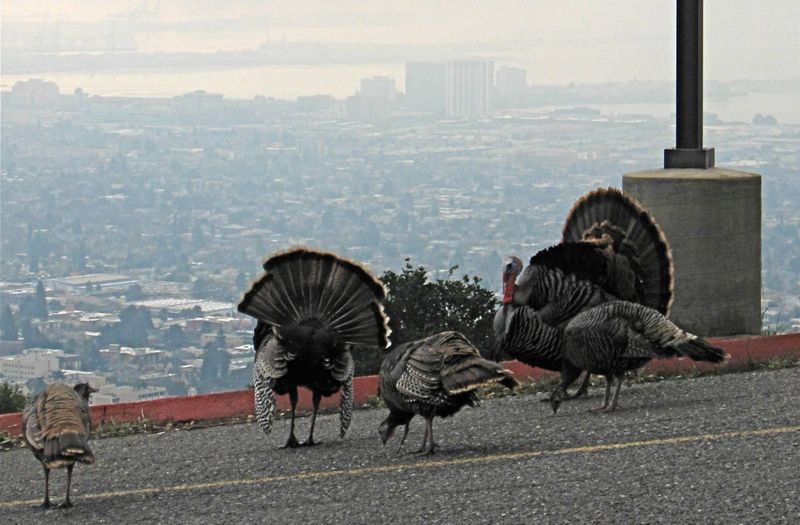
Wild turkeys have become unexpected residents in many suburban neighborhoods. These large birds are often seen wandering through yards, unbothered by human presence. Their gobbles are unmistakable, adding a touch of wilderness to urban settings.
Turkeys forage for insects and acorns, playing a role in controlling pests. Although they might seem intimidating due to their size, turkeys are generally harmless and can even be quite entertaining to observe.
Fun fact: Wild turkeys can run at speeds up to 20 miles per hour, showcasing their surprising agility.
Skunks
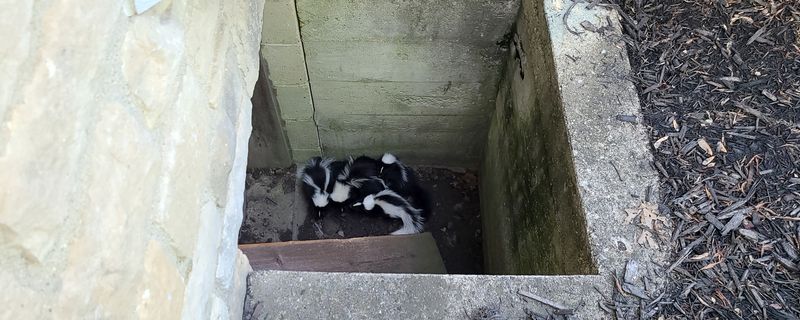
Skunks, known for their distinctive black and white appearance and potent spray, roam urban streets with cautious confidence. They are nocturnal foragers, seeking out food in gardens and trash bins.
Though often feared for their smell, skunks are generally non-aggressive and avoid confrontation. They play a crucial role in controlling insect populations, benefiting urban environments.
Did you know? Before spraying, skunks will often warn with a stomping display, giving potential threats a chance to retreat.
Squirrels
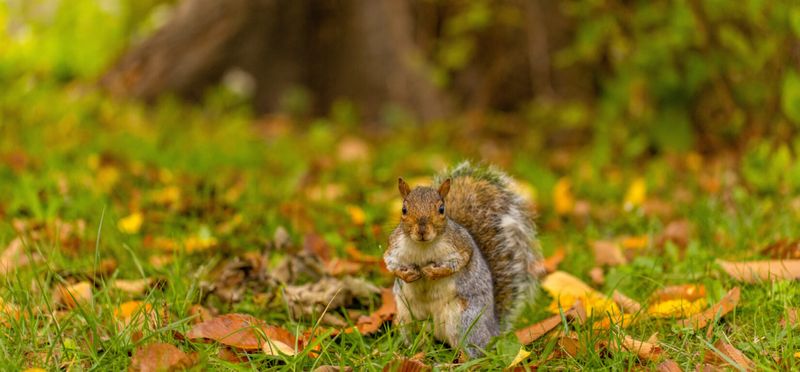
Squirrels are agile acrobats of city parks, known for their playful antics and bushy tails. These rodents are masters of adaptation, thriving in urban areas by utilizing trees and human structures for shelter.
Squirrels are often seen gathering and storing nuts, a behavior that aids in forest regeneration. They provide endless entertainment with their energetic movements and curious nature.
Fun fact: Squirrels are known to “fake bury” nuts to deceive potential thieves, showcasing their clever survival strategies.
Pigeons
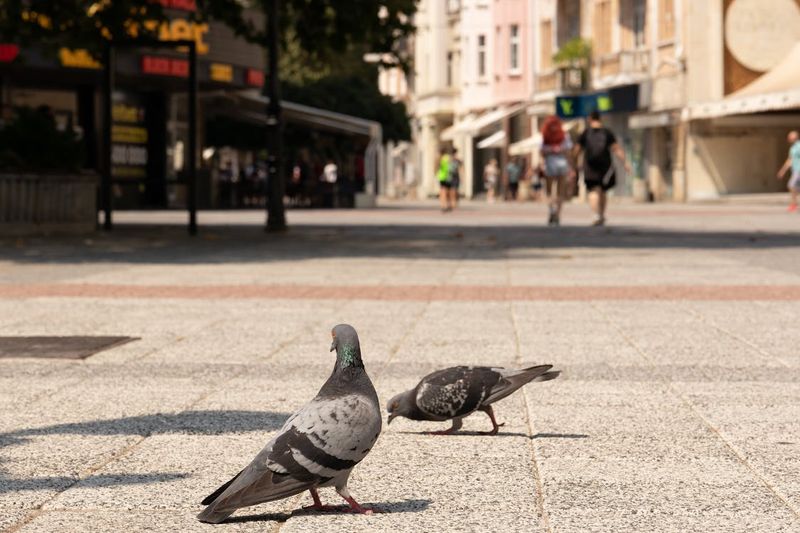
Pigeons, often dubbed “rats with wings,” are ubiquitous in urban environments. These birds thrive in city settings, feeding on scraps and nesting on buildings.
Despite their reputation, pigeons play a role in the ecosystem by cleaning up food waste. They are intelligent creatures, capable of recognizing human faces and solving problems. Pigeons are also known for their homing ability, often used in message carrying in history.
Did you know? Pigeons were used extensively during both World Wars to carry critical messages across enemy lines.
Rabbits

Rabbits, with their long ears and twitching noses, are charming additions to suburban landscapes. These herbivores frequent gardens, feasting on grass and other vegetation.
Their presence can be both a delight and a nuisance, as they may damage plants while foraging. Rabbits are known for their reproductive prowess, quickly increasing their populations in favorable environments.
Fun fact: Rabbits perform a playful leap known as a “binky,” where they twist in the air out of sheer joy.
Black Bears
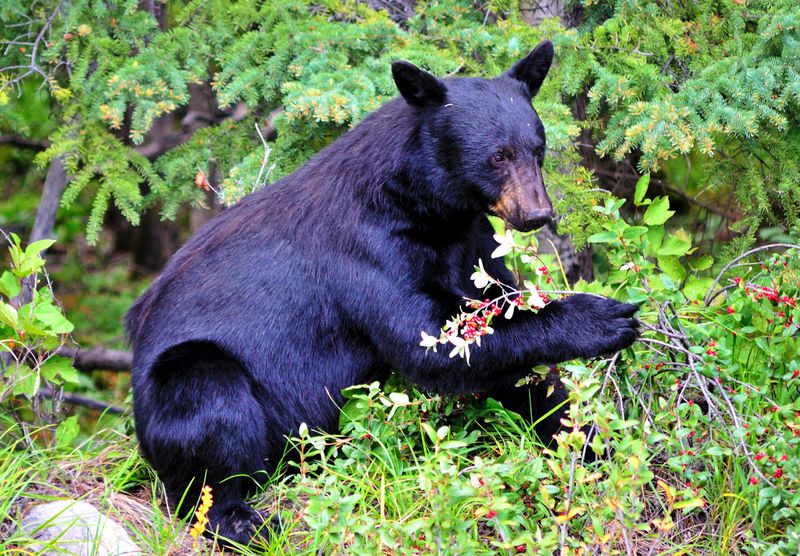
Black bears, powerful yet shy, occasionally wander into suburban areas bordering forests. These large mammals are omnivorous, often attracted by unsecured garbage or bird feeders.
While encounters can be startling, black bears generally avoid human interaction. Conservation efforts focus on educating the public to prevent attractants, ensuring both human safety and bear welfare.
Did you know? Black bears can run up to 30 miles per hour, despite their bulky size, making them surprisingly swift.
Gray Wolves

Gray wolves evoke awe and mystery as they occasionally venture near human settlements. These pack animals are critical for maintaining ecological balance, preying on deer and smaller mammals.
Wolves are highly social, communicating through howls and body language. Their presence is rarer in urban areas, often restricted to fringes of wild landscapes.
Fun fact: Wolves have a complex social structure, with packs led by an alpha pair that guides and nurtures the group.
Hawks

Hawks are skillful predators, often seen soaring above cities, scanning for prey such as rodents and small birds. Their sharp eyesight and powerful talons make them formidable hunters in urban skies.
These birds of prey help control pest populations, contributing to the ecological balance in city environments. Hawks are adaptable, using tall buildings as nesting sites, reminiscent of their natural cliffside habitats.
Did you know? Hawks’ keen eyesight allows them to spot a mouse from a mile away, making them efficient urban predators.
Beavers

Beavers are industrious builders, transforming city waterways into bustling ecosystems with their dams. These aquatic rodents are crucial for wetland creation, supporting diverse wildlife.
Beavers’ engineering skills can sometimes conflict with human infrastructure, but their ecological benefits are immense, improving water quality and providing habitats. Their presence in urban areas is a sign of healthy waterways.
Fun fact: Beavers’ teeth grow continuously, allowing them to gnaw through wood efficiently, a testament to their incredible adaptability.
Bobcats

Bobcats, with their tufted ears and keen senses, are elusive predators occasionally seen at the edges of urban areas. These solitary cats hunt rodents and birds, maintaining ecological balance.
Bobcats are known for their stealth and adaptability, often avoiding human interaction while thriving near cities. Their presence indicates a healthy, diverse ecosystem.
Fun fact: Bobcats can leap up to 10 feet in a single bound, showcasing their impressive agility and strength.
Eastern Screech Owl
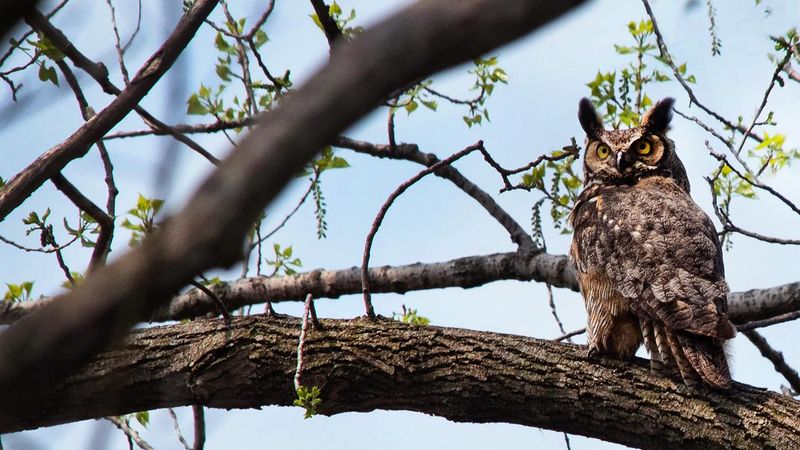
With eyes like amber jewels, the Eastern Screech Owl has found a niche in urban settings. These tiny predators are masters of disguise, blending seamlessly into tree bark during the day. At night, they take to the skies, hunting insects and rodents, their soft wingbeats silent against the city hum.
Did you know? Despite being fierce hunters, screech owls are often heard more than seen, their distinctive trills echoing through urban parks. A testament to adaptability, these owls thrive wherever trees and open spaces coexist, even amid skyscrapers.
Their presence highlights nature’s resilience, proving cities can be wild havens.

